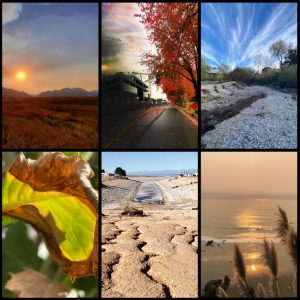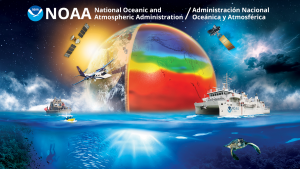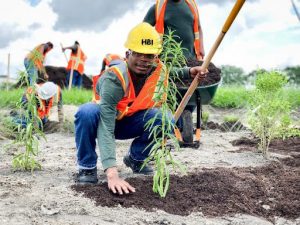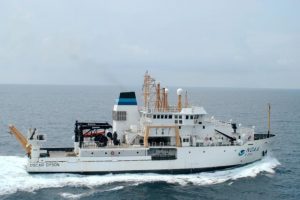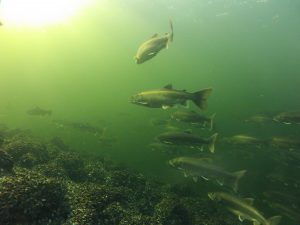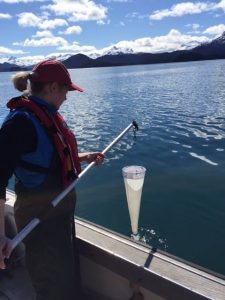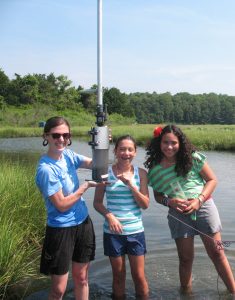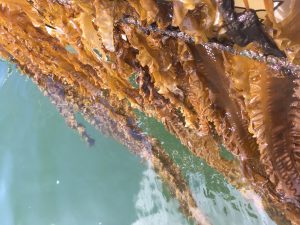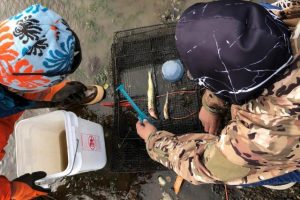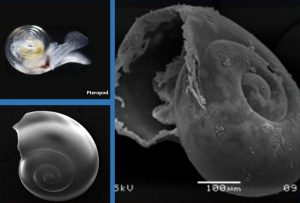Picture Climate Change: A glimpse at climate change in the west through the lens of American youth
NOAA West Regional Team The NOAA West Regional Team will showcase the winners of NOAA’s “Picture Climate Change” Student Photo Contest during this NOAA Live! 4 Kids Event! NOAA challenged students in fifth through twelfth grade from all U.S. states and territories to help NOAA understand how climate change has impacted them, their family,…
Read More¡Hola!, aqui NOAA
Juan Pablo Hurtado Padilla, NOAA’s Science on a Sphere in Falls Church, VA and Rafael de Ameller, NOAA’s National Environmental Satellite Data and Information Services in Bethesda, MD Español: Acompáñanos en nuestro primer programa en español donde junto al experto Rafael de Ameller aprenderemos más sobre NOAA. Juntos exploraremos todos los lugares donde podemos encontrar a los empleados de…
Read MoreKeeping Rain from the Drain
Jessica T. R. Brown, NOAA’s Georgia Sea Grant in Brunswick, GA Have you ever wondered where the rain goes once it hits the ground? Rainwater that falls on a surface that can’t absorb it is called stormwater. Scientists and engineers try to mimic nature to catch rainwater where it falls by using plants, soil, and…
Read MoreNorthern Exposure: a NOAA Corps Officer’s Work in Alaska
Commander Sarah Duncan, NOAA’s Pacific Marine Environmental Laboratory in Seattle, WA What is a NOAA Corps officer and what do they do for NOAA? Come find out by following CDR Sarah Duncan from the training academy to her work in Alaska on the NOAA ship Oscar Dyson! Resources to access at home: » NOAA Office…
Read MoreLessons from Lake Trout in Lake Champlain
Ashley Eaton and Caroline Blake, NOAA’s Lake Champlain Sea Grant in Burlington, VT Lake Champlain, known as Bitawbakw by the Abenaki people, is home to lake trout. As one of the top predators in Lake Champlain, they play an important role in maintaining balance within the lake ecosystem. When lake trout populations struggled, it took…
Read MoreAlgal Blooms: Signs of Spring and Signs of Trouble
Rose Masui, NOAA’s Kachemak Bay National Estuarine Research Reserve in Kachemak Bay, AK Join us to learn about how estuaries wake up in the spring, with warming waters and nutrients fueling blooms of phytoplankton in Alaskan coastal waters. We will talk about how marine plants are the primary producers in our coastal food webs, and…
Read MoreGet Your Feet Muddy at the Waquoit Bay Reserve!
Tonna-Marie Rogers, NOAA’s Waquoit Bay National Estuarine Research Reserve in Falmouth, MA Come along as we explore the Waquoit Bay National Estuarine Research Reserve (WBNERR) on Cape Cod, MA. Walk (virtually) with us into the shallow bay to visit experiment sites, explore the salt marsh, observe osprey and bay creatures, and wade into water sampling…
Read MoreKelp Farming in Coastal Waters
Anoushka Concepcion, NOAA’s Connecticut Sea Grant in Groton, CT in partnership with Holly Turner-Moore, Bridgeport Regional Aquaculture Science and Technology Education Center in Bridgeport, CT Ribbons of algae are springing up in coastal waters around the world as ocean farmers start to explore seaweed aquaculture. In this webinar, meet Anoushka Concepcion, a biologist from Connecticut…
Read MoreHitching a Ride: How to Spot and Stop Marine Invasive Species
Jasmine Maurer from NOAA’s Kachemak Bay National Estuarine Research Reserve in Kachemak Bay, AK How do invasive and exotic marine species arrive and spread in Alaska? We will talk about how to monitor and identify European green crab and tunicates, how they affect ecosystems, and what actions to take before the summer season to…
Read MoreIt’s Not Easy Being Shelled: The Ocean Acidification Blues
Meg Chadsey, NOAA’s Washington Sea Grant and the NOAA Pacific Marine Environmental Lab in Seattle, WA Excess carbon dioxide (CO2) isn’t just warming the planet; it’s also reacting with seawater and making the oceans more corrosive—a process known as ocean acidification. This slight increase in acidity doesn’t change the way the ocean looks or feels…
Read More
